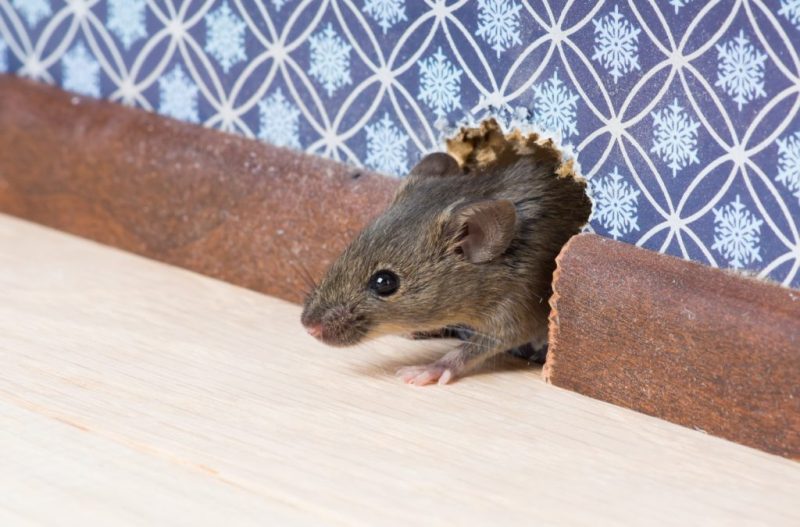
Rats are unwelcome guests in any home, posing health risks, causing property damage, and spreading diseases. Effective rat removal requires a strategic approach that addresses prevention, identification, and eradication. In this comprehensive guide, we’ll explore the various methods and strategies for removing rats from your home and preventing their return.
Understanding Rats
Before delving into rat removal methods, it’s essential to understand the behavior and habits of these pests. Rats are nocturnal rodents that are highly adaptable and resourceful. They seek out food, water, and shelter in human habitats, making homes, businesses, and other structures attractive targets for infestation. Rats can cause extensive damage by gnawing on wires, insulation, and structural components, as well as contaminating food and spreading diseases through their droppings and urine.
Signs of Rat Infestation
Rats are notorious pests known for their ability to thrive in human environments and cause significant damage to property. Identifying the signs of a rat infestation early is crucial for effective pest control and prevention of further damage. In this comprehensive guide, we’ll explore the various signs of a rat infestation, from visual cues to auditory and olfactory indicators, helping you detect and address rodent presence in your home.
Droppings:
One of the most obvious signs of a rat infestation is the presence of rodent droppings. Rat droppings are typically small, dark, and pellet-shaped, resembling grains of rice. You may find droppings scattered along rat pathways, near food sources, or in secluded nesting areas such as attics, basements, and crawl spaces. Fresh droppings are dark and moist, while older droppings may become dry and crumbly.
Gnaw Marks:
Rats have strong incisors that they use to gnaw on various materials to access food, water, and shelter. Gnaw marks on wooden structures, electrical wires, plastic pipes, and other household items are indicative of rat activity. Look for chewed or damaged areas, particularly around entry points, food storage areas, and nesting sites.
Grease Marks:
Rats leave greasy smudges or tracks along walls, baseboards, and other surfaces as they navigate through their environment. These marks are caused by the natural oils and dirt on a rat’s fur, which transfer onto surfaces as they brush against them. Grease marks may appear as dark streaks or stains and are often found along common rat travel routes.
Nesting Materials:
Rats build nests in secluded, sheltered areas using a variety of materials, including shredded paper, fabric, insulation, and plant matter. Look for signs of nesting activity in dark, undisturbed areas such as attics, crawl spaces, wall voids, and storage areas. Nests may appear as loosely constructed balls or clusters of materials, often surrounded by droppings and gnawed debris.
Sounds:
Rats are nocturnal creatures, so you may hear scratching, scurrying, or squeaking noises coming from walls, ceilings, or floors at night. These sounds are often more noticeable in quiet environments, such as when the house is quiet or at bedtime. Pay attention to any unusual noises, particularly during the early morning or late evening hours, as they may indicate the presence of rats.
Visual Sightings:
Although rats are primarily nocturnal and tend to avoid human contact, you may occasionally spot them during the day, especially if the infestation is severe. Look for signs of rats in areas where food is stored or prepared, such as kitchens, pantries, and garbage disposal areas. Rats may also be seen darting across open spaces or along walls, particularly at night.
Foul Odors:
Rats produce strong, musky odors that can be unpleasant and pervasive, particularly in areas with high rodent activity or large infestations. These odors may be caused by rat urine, droppings, or decomposing carcasses and can linger long after the rats have been removed. Pay attention to any unusual smells, particularly in enclosed spaces or areas with poor ventilation.
Pet Behavior:
Pets, particularly cats and dogs, may exhibit changes in behavior or show interest in certain areas of the home where rats are present. Watch for signs of heightened alertness, sniffing, scratching, or pawing at walls, floors, or furniture, as these may indicate the presence of rodents.
Damage to Property:
Rats can cause extensive damage to property by gnawing on wires, insulation, wood, plastic, and other materials. Look for signs of chewed or damaged items, particularly in areas where rats are likely to access food, water, or shelter. Pay attention to any unusual wear or tear on household items, as this may indicate rodent activity.
Tracks and Runways:
Rats create runways or pathways along walls, baseboards, and other surfaces as they travel between their nesting sites and food sources. These runways may be marked by footprints, tail drags, or smudges left behind by rat fur or grease. Look for signs of tracks and runways in areas where rats are likely to frequent, such as near food storage areas or along exterior walls.
Rat Removal Methods
When dealing with a rat infestation, it’s essential to choose the right removal method based on the severity of the problem and the specific circumstances. Here are some effective rat removal methods:
Trapping: Trapping is one of the most common and humane methods of rat removal. Choose snap traps or live traps baited with food like peanut butter, cheese, or dried fruit, and place them along rat trails or near nesting areas. Check traps regularly and dispose of captured rats promptly.
Poison Baits: Poison baits can be effective for controlling rat populations, but they should be used with caution, especially in homes with children or pets. Place bait stations in areas frequented by rats, following label instructions carefully to prevent accidental exposure to humans and non-target animals.
Ultrasonic Repellents: Ultrasonic repellent devices emit high-frequency sound waves that are unpleasant to rats, encouraging them to leave the area. While ultrasonic repellents may offer some deterrent effect, their effectiveness is limited, and they should be used in conjunction with other rat removal methods for best results.
Exclusion: Exclusion involves sealing off entry points and potential rat access routes to prevent further infestations. Use materials like wire mesh, steel wool, and expanding foam to seal gaps and openings in walls, floors, and foundations.
Professional Pest Control: In severe or persistent infestations, it may be necessary to enlist the services of a professional pest control company. Pest control professionals have the expertise, tools, and resources to assess the extent of the infestation, develop a customized treatment plan, and implement effective eradication measures safely and efficiently.
Safety Considerations
When attempting to remove rats from your home, it’s essential to prioritize safety for yourself, your family, and your pets. Here are some safety considerations to keep in mind:
- Read and follow all label instructions and safety precautions when using rat traps, baits, or repellents.
- Wear gloves, a mask, and protective clothing when handling rat droppings, nesting materials, or contaminated surfaces to reduce the risk of exposure to pathogens.
- Keep children and pets away from areas where rat removal measures are being implemented to prevent accidental ingestion or exposure to hazardous substances.
- Dispose of dead rats, traps, and contaminated materials properly, following local regulations and guidelines for waste disposal.
- If you’re unsure about how to safely and effectively remove rats from your home, consider consulting with a professional pest control company for assistance.
What Happens When Rats are Not Removed?
When rats are not removed from a property, the consequences can be severe and wide-ranging. Here are some potential outcomes of allowing a rat infestation to persist:
Property Damage: Rats have a natural inclination to gnaw on various materials to access food, water, and shelter. If left unchecked, rats can cause extensive damage to property by chewing through electrical wires, insulation, wood, plastic pipes, and other household items. This damage can compromise the structural integrity of the building and pose fire hazards due to exposed wiring.
Health Risks: Rats are carriers of various pathogens and diseases that can pose significant health risks to humans and pets. Rat droppings, urine, and saliva can contaminate food, surfaces, and air, leading to the spread of diseases such as salmonellosis, leptospirosis, hantavirus, and rat-bite fever. Additionally, rats may introduce fleas, ticks, and other parasites into the home, further increasing the risk of disease transmission.
Foul Odors: Rats produce strong, musky odors that can permeate the air and linger long after the rats have been removed. The presence of rat urine, droppings, and decomposing carcasses can create foul odors that are unpleasant and difficult to eliminate, even with thorough cleaning and deodorizing efforts.
Infestation Spread: Rats reproduce rapidly, with females capable of producing multiple litters of offspring each year. If left unchecked, a small rat infestation can quickly escalate into a larger, more widespread problem, as rats continue to breed and expand their territory within the property and surrounding areas.
Final Words
Rat infestations pose significant health and safety risks and require prompt and effective action for removal. By understanding the signs of rat infestation, implementing preventive measures, and choosing appropriate removal methods, you can keep your home rodent-free and protect your family from potential harm. Remember to prioritize safety at all times and seek professional assistance if needed to address severe or persistent rat infestations. With diligence, patience, and the right strategies, you can reclaim your home from unwanted rodent invaders and enjoy a pest-free living environment.
The information presented in this article is based on the expertise of specialists from Critter Evictor, a company based in San Antonio, Texas, that provides professional rat removal services. Their experience and knowledge were essential in offering effective advice and solutions for combating this issue. We thank them for their collaboration.








